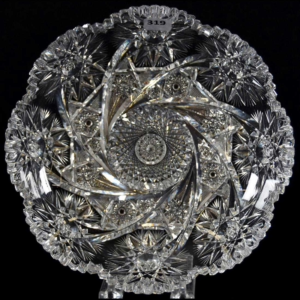Limonite stone – properties, virtues & benefits
This stone has a history dating back to ancient times, when it was associated with motherhood among the Greeks. Female eagles used it to encourage egg-laying and hatching by taking it into their nests. Because of its shape and size, similar to that of an egg, it was used to accompany women during childbirth. In lithotherapy, it is considered a soothing stone that can help overcome stress and anxiety, as well as relieve digestive disorders.
LIMIT CHARACTERISTICS
- Chakra: Root (or Muladhara).
- Properties: Protection, grounding, emotional stabilization, cellular regeneration, immune system strengthening.
- Astrology: Mars.
- Zodiac: Aries, ScorPio.
- Elements: Earth, Fire.
- Colors: Brown-red, brown-yellow.
- Hardness: 5-6.5 on the Mohs scale.
- Chemical Formula: Fe2O3-nH2O.
- Associated god: None.
LIMONITE – ITS HISTORY
This stone has aroused superstitions and beliefs over the centuries. It was first mentioned in antiquity, and a Greek physician named Discorides gave it the name “aetite”, which comes from the Greek word “aethos”, meaning eagle in French, as its history is linked to this species of bird. Legend has it that limonite, also known as eagle stone, helps eagles to reproduce by promoting egg-laying and hatching, which is why the female brings it into her nest. This reputation has spread as far as the Orient, where it is called the “stone swallow” in China.
The stories around limonite come from its egg-shaped, egg-like form. The stone is hollow and contains several bells that produce a sound when shaken. This characteristic has led to an analogy with a bird’s egg, and it is also associated with a mother’s womb during pregnancy.
In the Middle Ages, limonite stone was associated with motherhood and was considered to have mystical virtues in France and Germany. Because of its hollow shape, it was considered to represent a fetus in a woman’s womb. People believed it facilitated childbirth when tied above the knee, but delayed the onset of labor when placed on the chest. Medieval and Renaissance figures such as Isabella d’Este, Marchioness of Mantua, believed in its medicinal and magical properties. It was also said to have the ability to prevent the presence of poison in food when in contact with it, and to render poison harmless. Worn on the left arm, it was considered a bearer of love.
Dioscorides mentions that the stone keeps thieves away when mixed with flour, a tradition still practiced in modern Greece. It is also known to help treat skin infections, such as acne, and to bring comfort in difficult situations.
In the 18th and 19th centuries, limonite stone was the subject of serious scientific study. Its hollow ovoid shape contains a detachable central core, and its russet color comes from its goethite composition, which also contains a nodule of hardened clay, which explains the noise produced when it’s shaken.
STONE LIMONITE – ITS ORIGIN AND COMPOSITION
Limonite is known by various names, such as aetite, eagle stone or bell stone. It is associated with the eagle due to the belief that it facilitates egg-laying in this species of bird, a belief that dates back to antiquity. This reputation led people of the time to attribute numerous therapeutic properties to it, including the ability to facilitate childbirth.
This stone is a sedimentary rock composed of iron hydroxides presenting a microcrystalline form and also containing other elements such as goethite, aluminum hydroxide, lePidocrocite, clay minerals, arsenates and colloidal silica, among others.
Limonite is derived from the weathering of iron minerals such as magnetite, siderite and pyrite. In its natural state, it has a blackish hue, but turns yellow during the casting process. It has no real economic value in the steel industry due to its arsenate and phosphate composition.
.
Limonite is considered the main component of the iron cap, and it transforms into hematite by losing water when its temperature is the same as that of the surface.

BLACK LIMONITE STONE – VERTIES AND PROPERTIES
Since ancient times, limonite stone has been associated with many virtues, some based on superstition while others are proven. It therefore naturally occuPies an important place in lithotherapy.
PSYCHOLOGICAL LIMITATION
Limonite stone can be a valuable ally in helPing people who are going through difficult times or who have suffered emotional wounds to overcome their traumas. It can also help alleviate feelings of anger and stress, which is particularly useful in a world where work can put a lot of pressure on individuals. As a soothing, grounding stone, it can help maintain a state of calm and emotional stability.
For singles, limonite stone is known to increase the chances of successful encounters, whether in love or friendship. It is believed to guide individuals towards their soulmate or best friend.
PHYSICAL LIMIT
Limonite has long been known for its beneficial effects on blood disorders, as well as for its potential to relieve lung and liver problems. In Chinese medicine, it is considered to have a positive effect on the digestive system, particularly on stomach and intestinal functions.

LIMONITE STONE – CLEAN AND RECHARGE
Limonite stone can be cleaned and recharged in the same way as most other stones and crystals. Here are some common methods:
Cleaning:
- Water: Gently rinse the limonite stone under running water to remove dirt and impurities. Be sure to dry the stone completely after washing.
- Salt: Place the limonite stone in a bowl filled with salt for several hours, then rinse thoroughly under running water to remove the salt.
- Fumigation: using incense or sage, pass smoke around the limonite stone to cleanse its energy.
Loading:
- Sunlight: Place the limonite stone on a sunny windowsill for a few hours to recharge it with solar energy.
- Moonlight: Place the limonite stone outside at night to recharge it with lunar energy.
- Earth: Bury the limonite stone in the ground for several days to recharge it with Earth energy.
It’s important to note that certain cleaning and reloading methods can damage or alter limonite stone. Be sure to choose a method that best suits your stone and personal preferences.
WHERE DOES THE NAME LIMONITE COME FROM?
The name “limonite” comes from the Greek word “limon”, meaning “swamp” or “lake”. This name was given to limonite stone because of its common formation in marshy soils, lakes and wetlands where the water has a high iron content. Limonite is a sedimentary rock rich in iron oxide, formed by the preciPitation of iron minerals from water. It can also be formed by the alteration of iron minerals in existing rocks under the effect of water and oxidation. Limonite is often associated with other minerals such as goethite and hematite, which are also iron oxides.
WHICH CHAKRA DOES LIMONITE ACT ON?
Limonite stone acts primarily on the root chakra (or Muladhara), which is located at the base of the sPine. The root chakra is associated with anchoring, stability, security and connection to the Earth. Limonite is a stone that helps strengthen the root, balance the body’s energies and stabilize the emotions. It can also help stimulate the immune system, promote cell regeneration and improve blood circulation. By working with limonite stone on the root chakra, you can strengthen your connection to the Earth and regain a sense of inner security and stability.
WHICH ASTROLOGICAL SIGN IS ASSOCIATED WITH LIMONITY?
The astrological sign associated with limonite stone is Aries, which is a fire sign ruled by the planet Mars. Aries is known for being an energetic, courageous, passionate and determined sign, and limonite can help reinforce these qualities by working with the root chakra to ground energy and boost self-confidence. Limonite is also associated with the sign of ScorPio, which is also ruled by Mars and is known to be a passionate, intense and profound sign.
SUMMARY OF THE LIMONITE STONE
Limonite is a stone composed mainly of hydrated iron oxides, which give it its brownish-yellow to reddish-brown color. It is often found in association with other minerals such as goethite, siderite and pyrite.
Limonite is an earthy, porous stone that can be polished to a smooth, shiny appearance. It is often used for decorative applications such as carving and stone wall construction.
Limonite is also used in industry for the production of iron oxides, which are used as Pigments in paints and cosmetics. It is also used as an iron ore, but its iron content is generally too low to justify large-scale mining.
In lithotherapy, limonite is considered a stone of strength and protection, helPing to clear energy blockages and boost physical and mental energy. It is also considered beneficial for liver and spleen problems.

